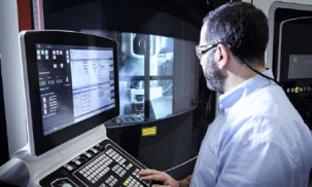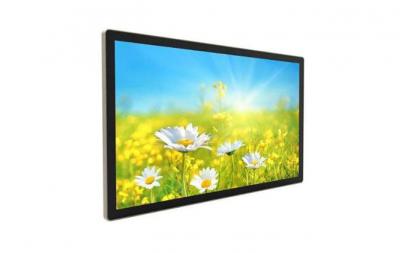EDP interface and LVDS interface are widely used in various industrial LCD screens. EDP and LVDS are both video signal interfaces used in industrial computers to connect touch screens or LCD screens. So which one is better, EDP or LVDS? What are the differences? Let's do a simple comparison analysis below.
The EDP interface is a fully digital interface based on the DisplayPort architecture and protocol, and its full name is Embedded DisplayPort.
It is generally used as a communication interface for notebooks, tablets, and computer displays. The computer using EDP display interface has higher resolution than the one using LVDS interface. High-definition screens usually use EDP communication interface, which can achieve wide viewing angles.
The screen interface of the EDP screen line is a 0.3-0.5 small-pitch soldering flat cable. The EDP channel can be divided into single-channel and dual-channel. The EDP screen line generally consists of 2 groups, 3 groups, 5 groups, and 8 groups of twisted pairs. The common EDP screen line has 2 groups and 3 groups of signal twisted pairs.
The LVDS interface is a low swing differential signal technology, and its full name is Low Voltage Differential Signaling. It is a digital video signal transmission method developed to overcome the disadvantages of high power consumption and strong EMI electromagnetic interference when transmitting high-speed broadband data in TTL voltage mode.
LVDS allows signals to be transmitted at speeds of several hundred Mbps on differential PCB lines or balanced cables. It uses low swing and low current drive outputs to achieve low noise and low power consumption. LVDS screen lines are divided into standard definition lines and high definition lines. The LVDS high-definition line has a 0.5 spacing dual row, namely JAE FIRE51P high definition line. The LVDS standard definition line has a 1.0 spacing and 1.25 spacing, and the terminal is assembled by rivet pressure. LVDS interface for industrial LCD screens is widely used in industrial control integrated machines.
The biggest feature of the LVDS interface is its low voltage and low current drive mode, which achieves low noise and low power consumption. The characteristic of the EDP interface is its use of micro-packaging structure, which can simultaneously transmit multiple data, has a simple circuit, and minimal electromagnetic interference. Therefore, the transmission rate of the EDP interface is much higher than that of the LVDS interface, and high-definition screens usually use EDP communication interface to achieve wide viewing angles.
Let's take a LCD display with the same resolution as an example. If the LVDS interface is used, more than 20 pairs of data transmission lines are required, but if the EDP interface is used, only 4 to 6 pairs of lines are needed. Therefore, the advantage of EDP is more obvious in the high-resolution high-definition screen field.
Currently, EDP interfaces are widely used in industrial control LCD screens to improve the data transmission speed between the display panel and the processor. EDP interfaces have become mainstream in the high-definition and wide-viewing-angle screen fields.
Of course, LVDS is also widely used in the field of industrial LCD screens due to its low power consumption characteristics, meeting the needs of different users.
 How Much Do You Know About Medical LCD Displays?February 8, 2023With the wide application of medical LCD displays in medical instruments and equipment, it is valuable and meaningful for medical equipment engineers to understand and master the common faults and mai...view
How Much Do You Know About Medical LCD Displays?February 8, 2023With the wide application of medical LCD displays in medical instruments and equipment, it is valuable and meaningful for medical equipment engineers to understand and master the common faults and mai...view The Role of Touch Panel Modules in Modern DevicesJanuary 25, 2024In today's fast-paced world, technology plays a vital role in our everyday lives. From smartphones to tablets and even refrigerators, the integration of touch panel modules has revolutionized the ...view
The Role of Touch Panel Modules in Modern DevicesJanuary 25, 2024In today's fast-paced world, technology plays a vital role in our everyday lives. From smartphones to tablets and even refrigerators, the integration of touch panel modules has revolutionized the ...view Innovate and Impress: Custom LCD Display Modules for Your BusinessOctober 23, 2023In the ever-evolving landscape of business, staying ahead of the competition often requires a touch of innovation and a dash of uniqueness. One way to set your brand apart is by embracing custom LCD d...view
Innovate and Impress: Custom LCD Display Modules for Your BusinessOctober 23, 2023In the ever-evolving landscape of business, staying ahead of the competition often requires a touch of innovation and a dash of uniqueness. One way to set your brand apart is by embracing custom LCD d...view Enhancing the Gaming Experience with TFT Display Touch ScreensDecember 8, 2023In the ever-evolving landscape of gaming technology, one innovation stands out as a game-changer—TFT display touch screens. These sleek and responsive screens have taken the gaming experience to new ...view
Enhancing the Gaming Experience with TFT Display Touch ScreensDecember 8, 2023In the ever-evolving landscape of gaming technology, one innovation stands out as a game-changer—TFT display touch screens. These sleek and responsive screens have taken the gaming experience to new ...view How Car LCD Modules Are Transforming Driving ExperiencesJanuary 25, 2024The automotive industry has undergone significant transformations over the years, and one of the most notable advancements is the integration of LCD modules in cars. These innovative displays have rev...view
How Car LCD Modules Are Transforming Driving ExperiencesJanuary 25, 2024The automotive industry has undergone significant transformations over the years, and one of the most notable advancements is the integration of LCD modules in cars. These innovative displays have rev...view Navigating the Future: The Wonders of LCD Touch ScreensNovember 17, 2023In the ever-expanding landscape of interactive technology, LCD touch screens have become the unsung heroes, transforming the way we engage with our digital devices. From smartphones and tablets to int...view
Navigating the Future: The Wonders of LCD Touch ScreensNovember 17, 2023In the ever-expanding landscape of interactive technology, LCD touch screens have become the unsung heroes, transforming the way we engage with our digital devices. From smartphones and tablets to int...view Call us on:
Call us on:  Email Us:
Email Us:  2F-M1 XiaWei Industrial Park, GuanLan, LongHua District, SZ, China
2F-M1 XiaWei Industrial Park, GuanLan, LongHua District, SZ, China